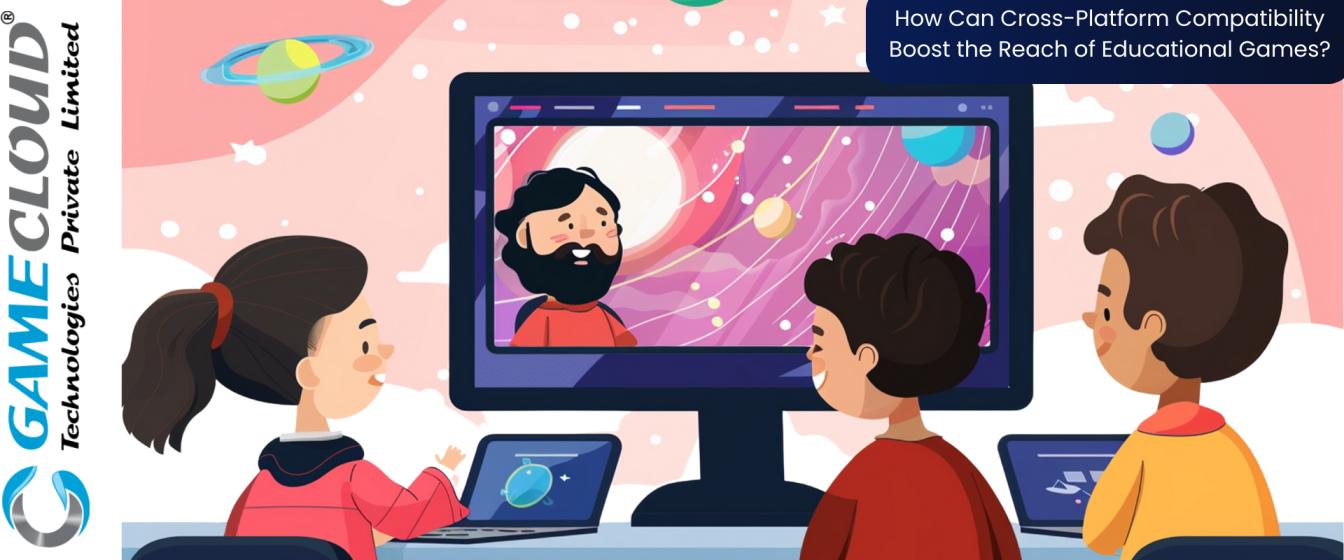
Educational games have become increasingly important in modern learning, offering an engaging and interactive approach to teaching. These games simplify complex subjects, foster critical thinking, and enhance collaboration among users. In fact, a large percentage of teachers believe that game-based learning increases user engagement and improves retention.
Cross-platform compatibility plays a crucial role in expanding the reach of these educational games by enabling them to be accessed on a wide range of devices, including smartphones, tablets, and desktops. This flexibility ensures that learners from various backgrounds can participate, regardless of the type of device they own. By enhancing accessibility and inclusivity, cross-platform compatibility allows educational games to reach a broader audience and ensures that all users can benefit from this interactive learning method. This universal accessibility is key to maximizing the impact and effectiveness of educational games in today’s digital world.
Enhancing Accessibility for a Wider Audience
Cross-platform compatibility significantly enhances the accessibility of educational games by allowing them to be played on a variety of devices such as smartphones, tablets, and PCs. This flexibility ensures that users using different operating systems like iOS, Android, and Windows can access these games seamlessly. Given that Android and iOS dominate nearly 99% of the mobile OS market, it is crucial for educational game developers to cater to both platforms to reach a broader user base.
By ensuring compatibility across different devices, educational games can support learners from diverse economic backgrounds, as they can use the devices they already own, making learning more inclusive. This increased accessibility fosters greater engagement, as users can participate in interactive learning wherever they are. Furthermore, the ability to use educational games across various platforms improves retention by making the learning experience more flexible and convenient, particularly as mobile device usage grows globally. This universal access expands the reach of educational content, making it more effective in diverse environments.
Fostering Collaboration and Inclusive Learning
Cross-platform functionality enables educational games to create collaborative learning environments by allowing users to connect and engage across different devices such as PCs, tablets, and smartphones. This flexibility is crucial for multiplayer and collaborative learning experiences, where real-time teamwork and peer-to-peer interactions foster critical thinking and communication skills.
By supporting various operating systems, cross-platform games ensure that users from different regions, with different devices, can participate equally. This inclusivity enhances educational outcomes by promoting diverse perspectives and collaboration, regardless of a user’s location or device preference.
Successful examples of cross-platform educational games have demonstrated the potential of collaborative learning. Games that involve teamwork, like virtual environmental simulations, help users develop problem-solving skills while tackling challenges together. These games, when integrated with classroom learning, have shown improved engagement and academic performance, proving that cross-platform functionality plays a vital role in enhancing the reach and effectiveness of educational games.
Where Fun Meets Learning: Shaping the Future of Games at LolzSoft
At LolzSoft, we focus on creating fun and engaging video games that blend entertainment with education. Emerging from GameCloud Technologies, we aim to inspire and educate through immersive gaming experiences. Our mission is to make a positive impact by developing games that bring joy and meaningful learning for both kids and adults. As we continue to innovate in game development, we welcome passionate developers to join us in crafting games that shape the future of gaming.
Conclusion
Cross-platform compatibility significantly broadens the reach of educational games by ensuring accessibility across devices and operating systems. Educators and developers should prioritize this feature to create a more inclusive and engaging learning environment. As technology continues to evolve, the future of educational games lies in tech-driven, cross-platform solutions that meet diverse learning needs globally.
For Know More Contact-Now
FAQ: How Can Cross-Platform Compatibility Boost the Reach of Educational Games?
1. What is cross-platform compatibility in educational games?
Cross-platform compatibility allows educational games to be played on various devices and operating systems, such as smartphones, tablets, and desktops, ensuring that all users can access the games regardless of their device preferences.
2. Why is cross-platform compatibility important for educational games?
It enhances accessibility, allowing a broader audience to engage with educational content. By reaching users on different devices, cross-platform compatibility fosters inclusivity and ensures that learners from diverse backgrounds can participate in interactive learning experiences.
3. How does cross-platform compatibility enhance collaboration in educational games?
Cross-platform functionality enables multiplayer and collaborative learning experiences, allowing users on different devices to connect and work together in real-time. This promotes critical thinking and communication skills while enhancing educational outcomes through diverse perspectives.
4. What impact does cross-platform compatibility have on user engagement and retention?
By allowing access on multiple devices, cross-platform compatibility makes educational games more flexible and convenient to use, increasing user engagement and improving retention rates as learners can participate anytime, anywhere.
5. How can educators and developers leverage cross-platform compatibility for educational games?
Educators and developers should prioritize creating games that support various devices and operating systems to foster inclusivity, enhance engagement, and meet the diverse learning needs of students, maximizing the effectiveness of educational games in modern learning environments.
